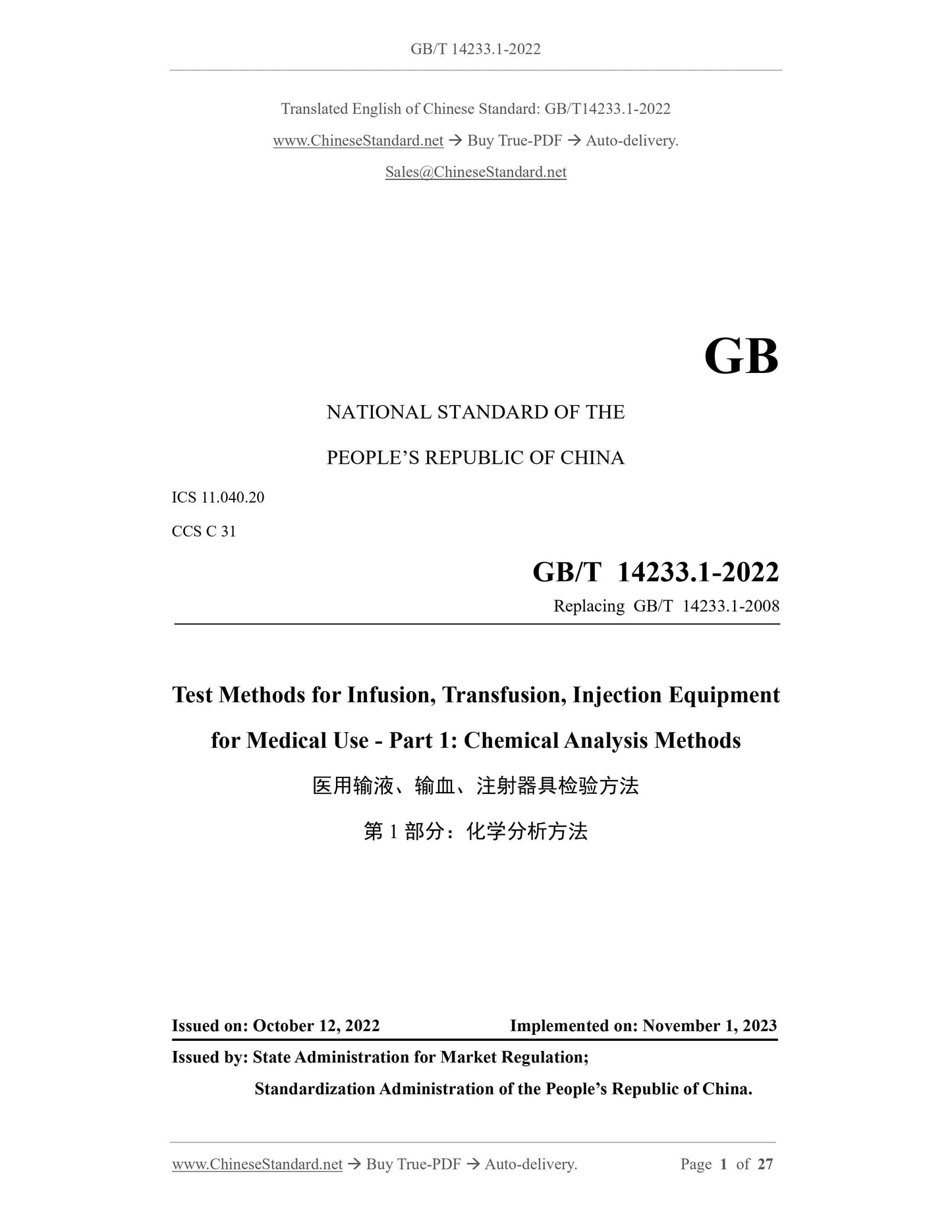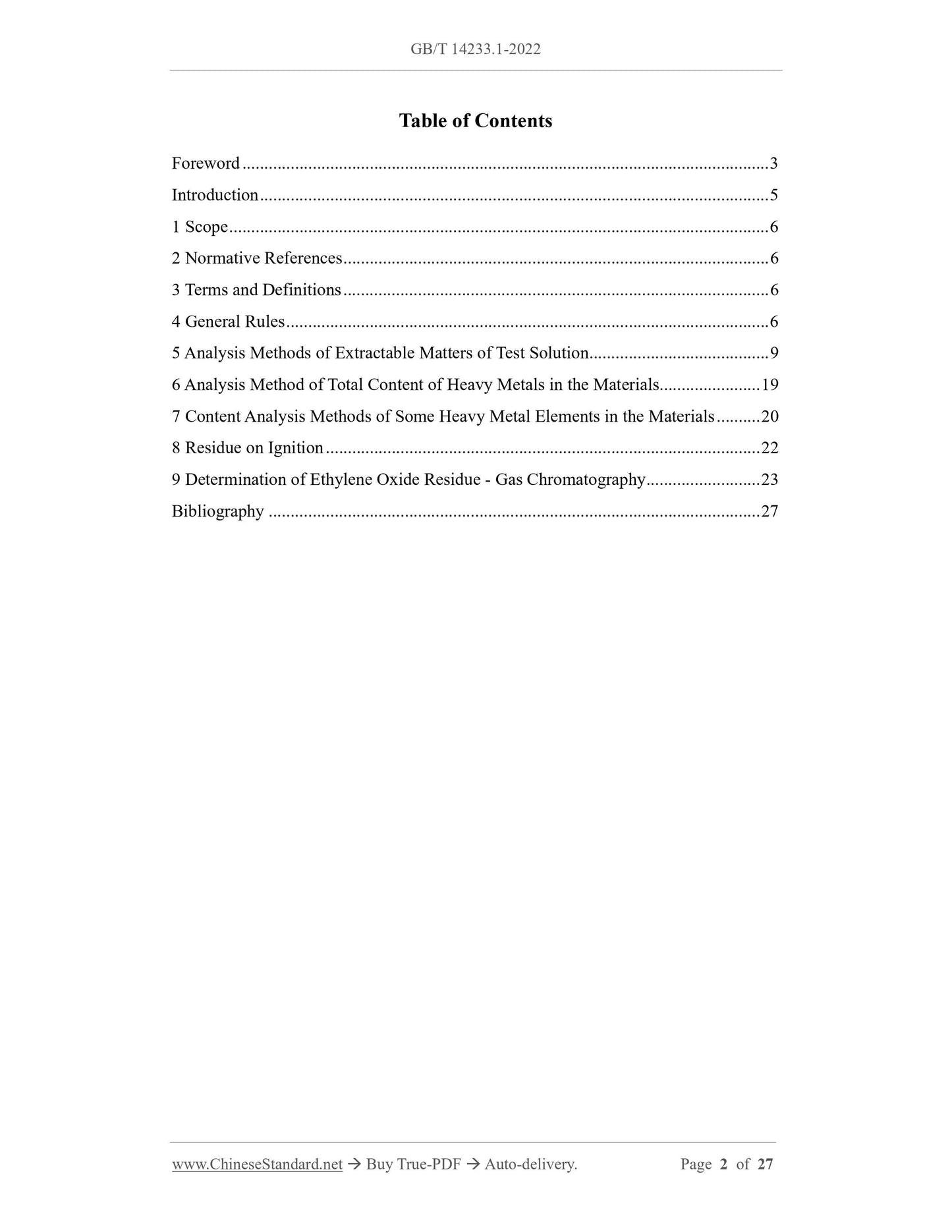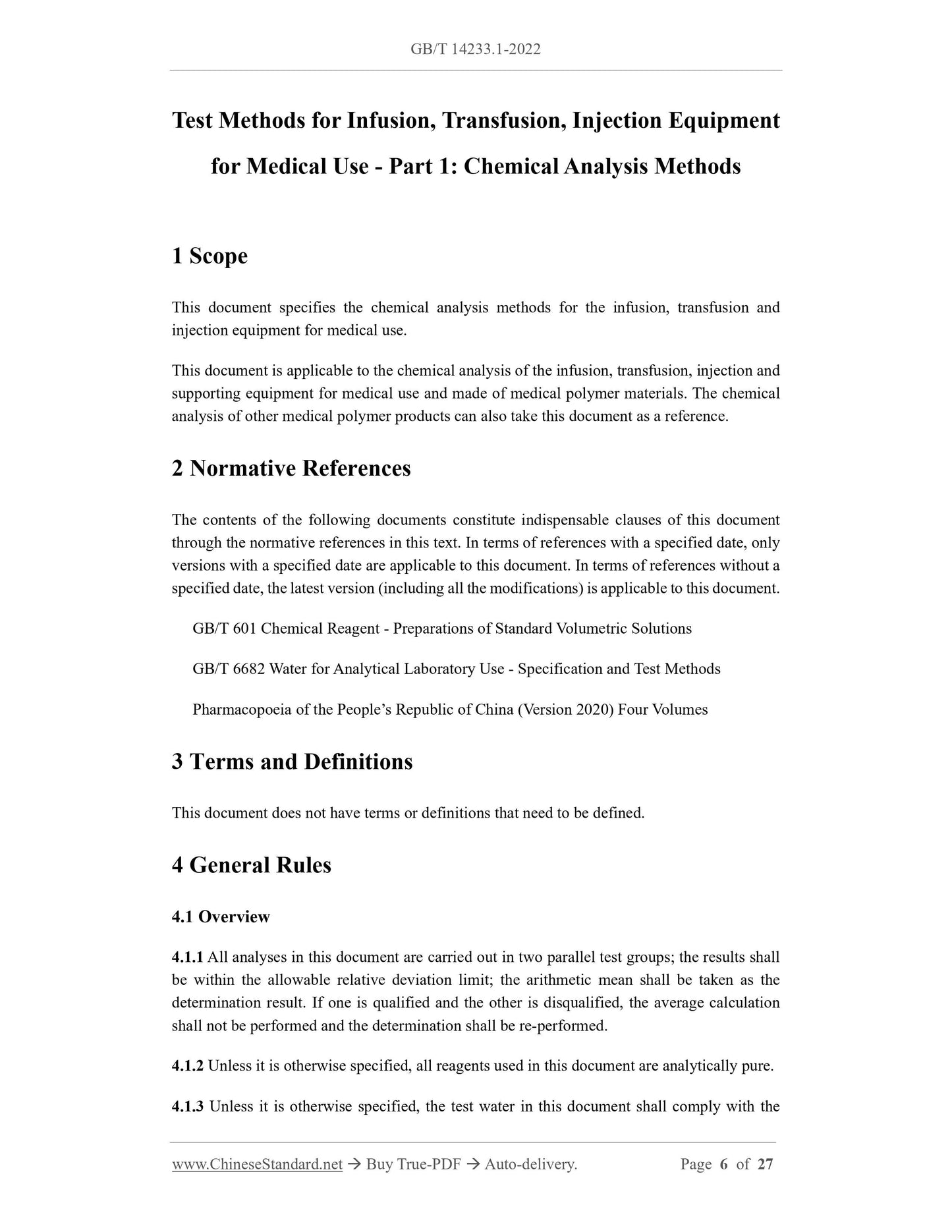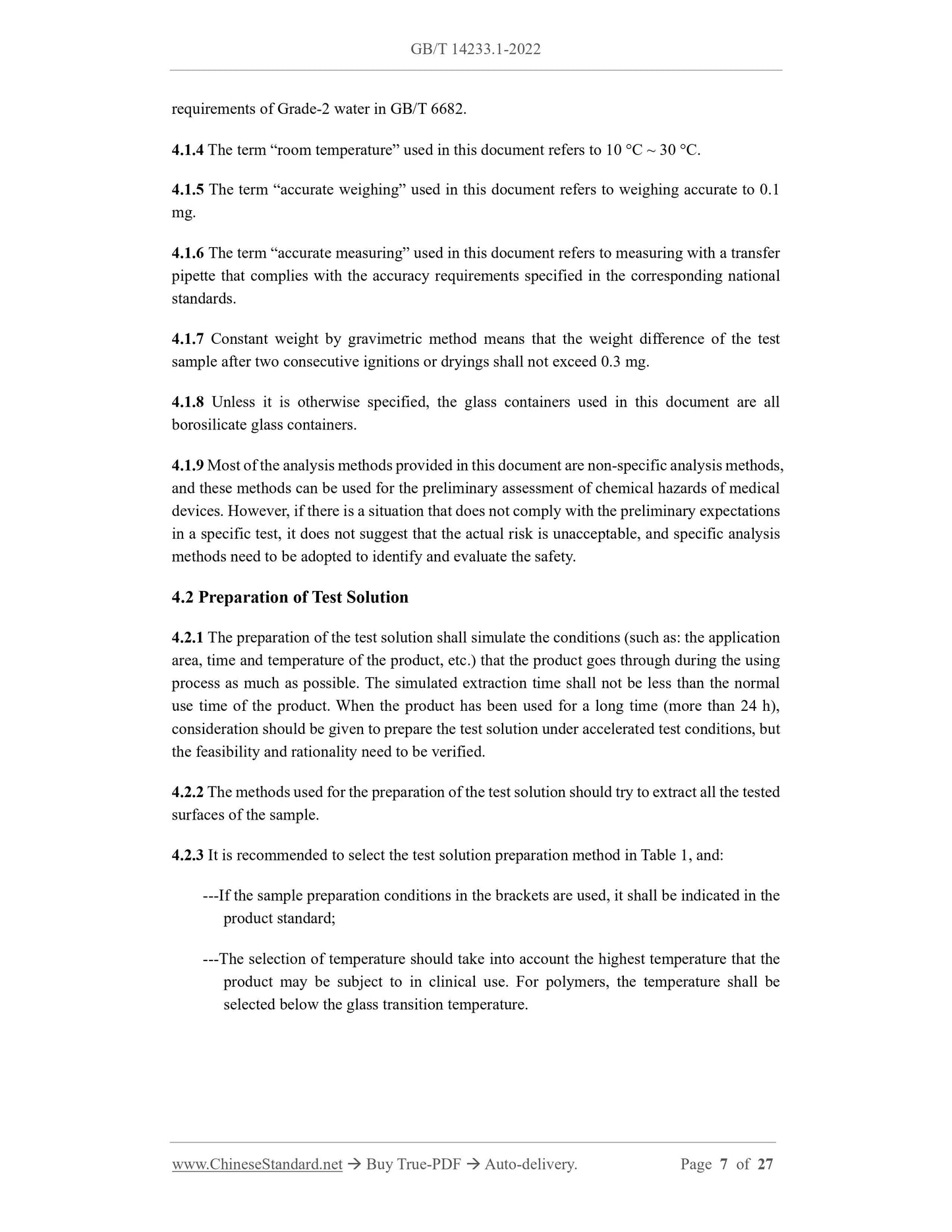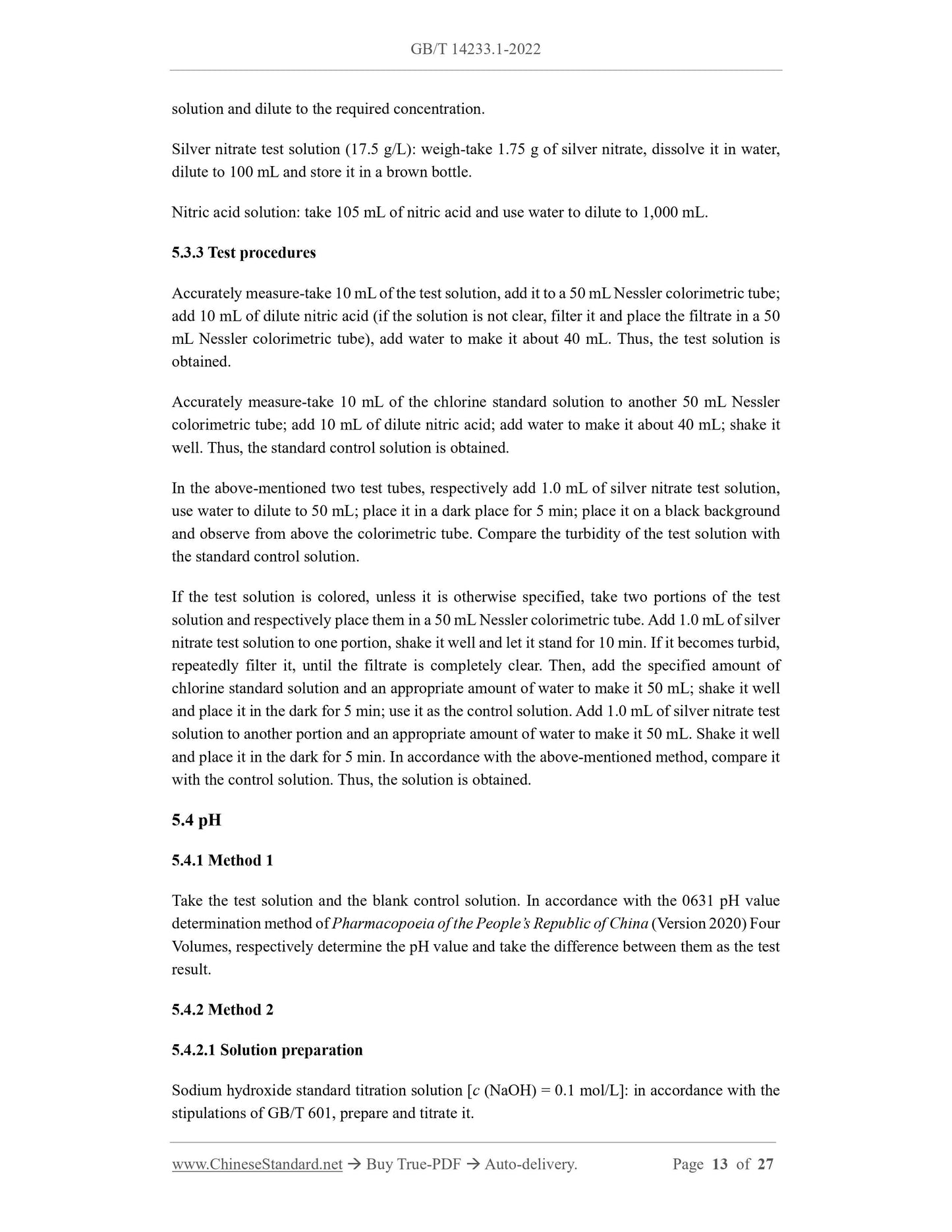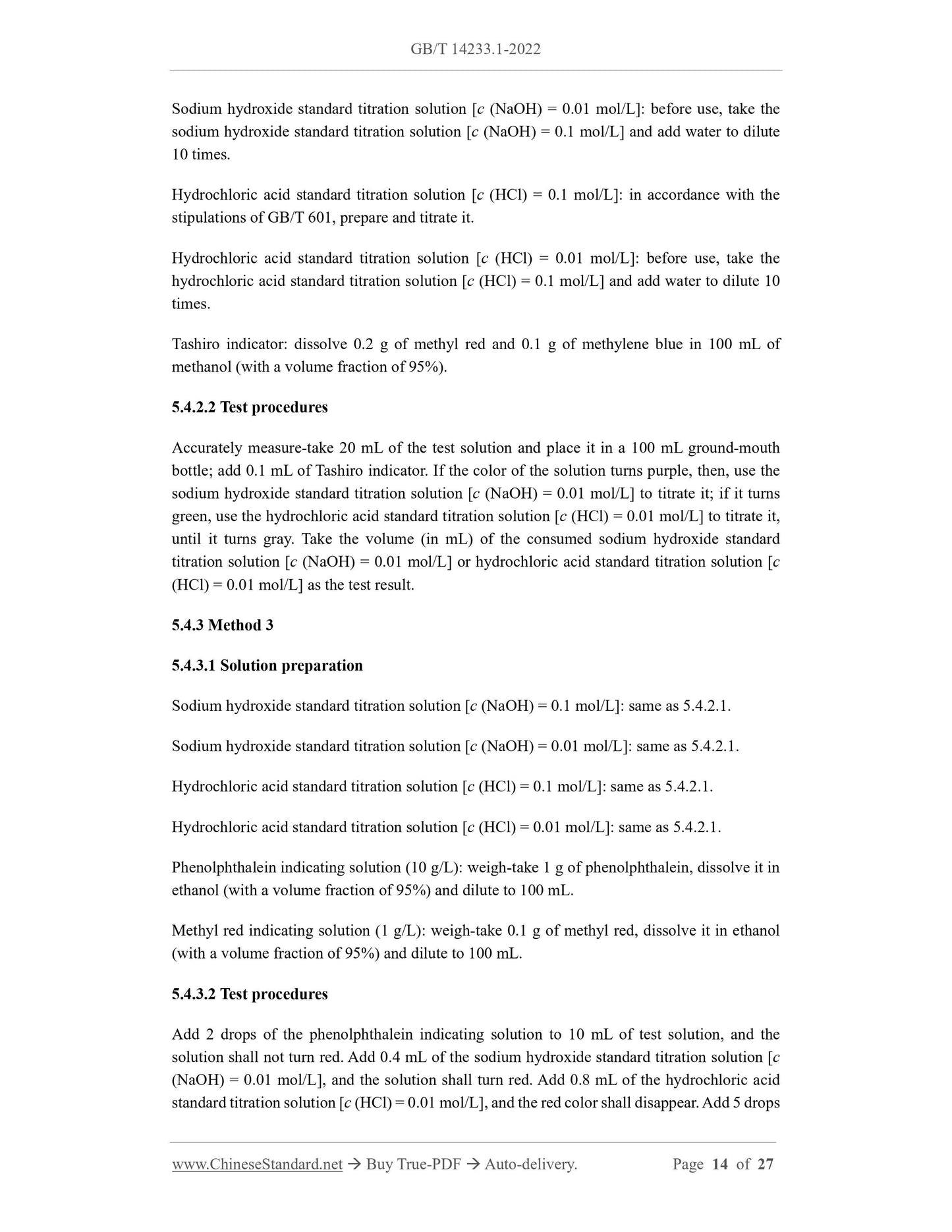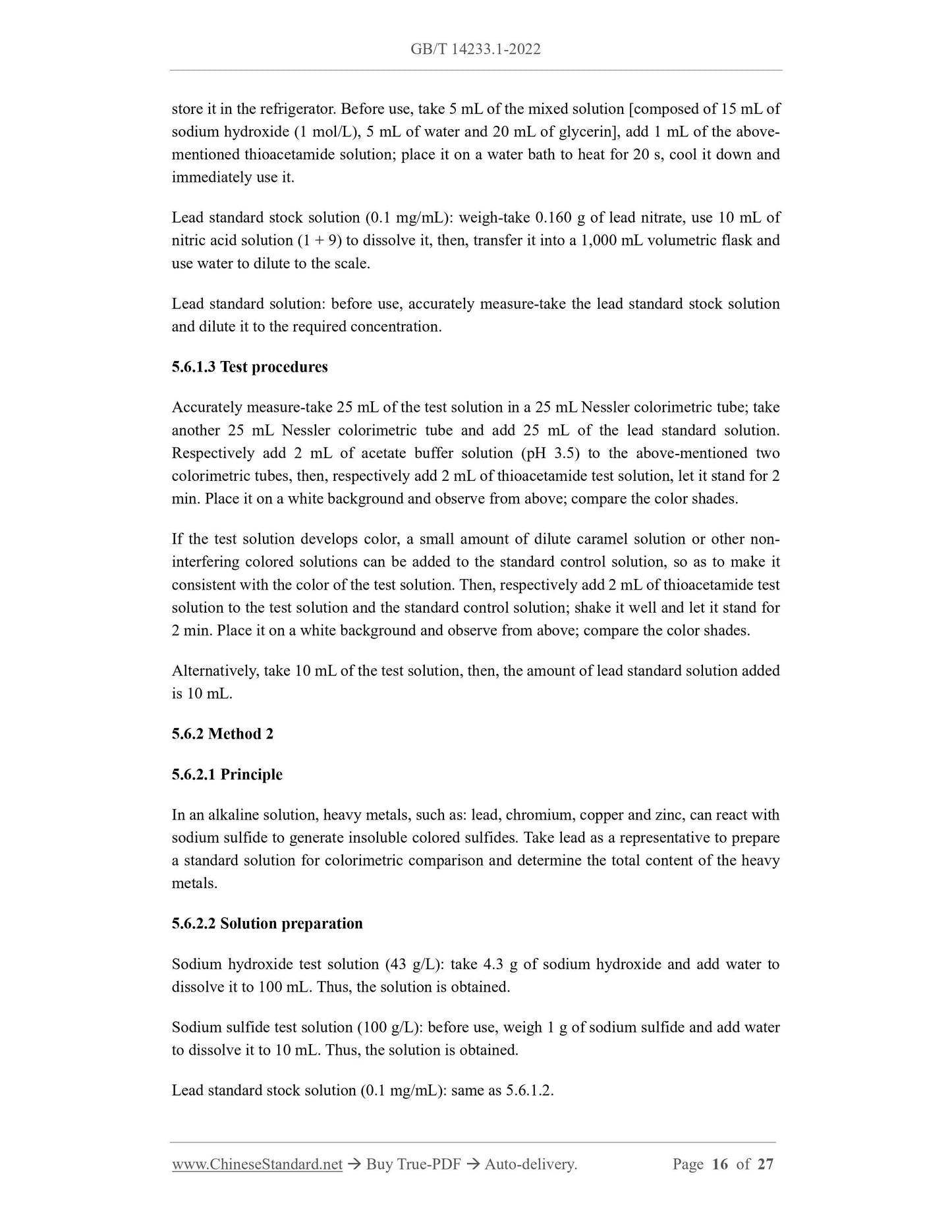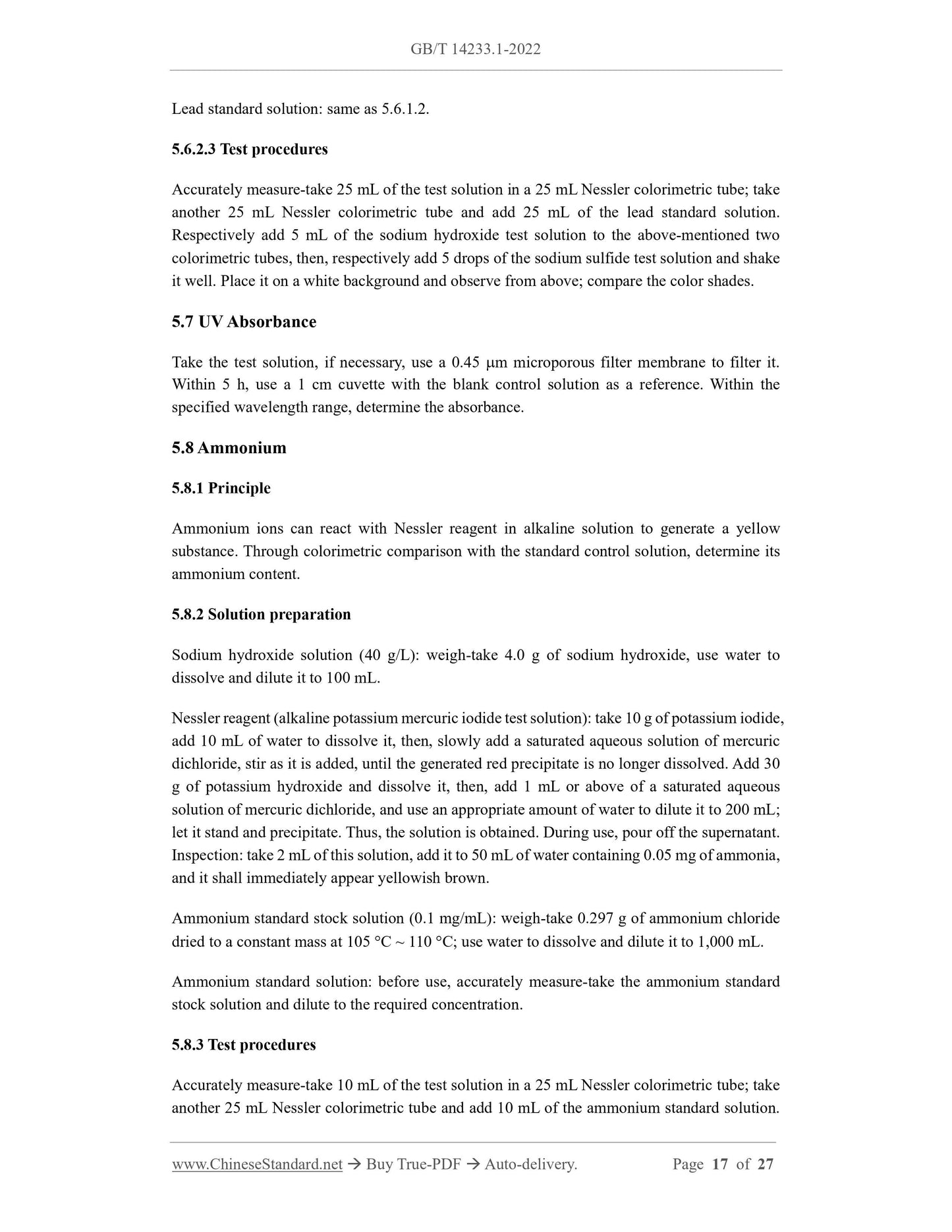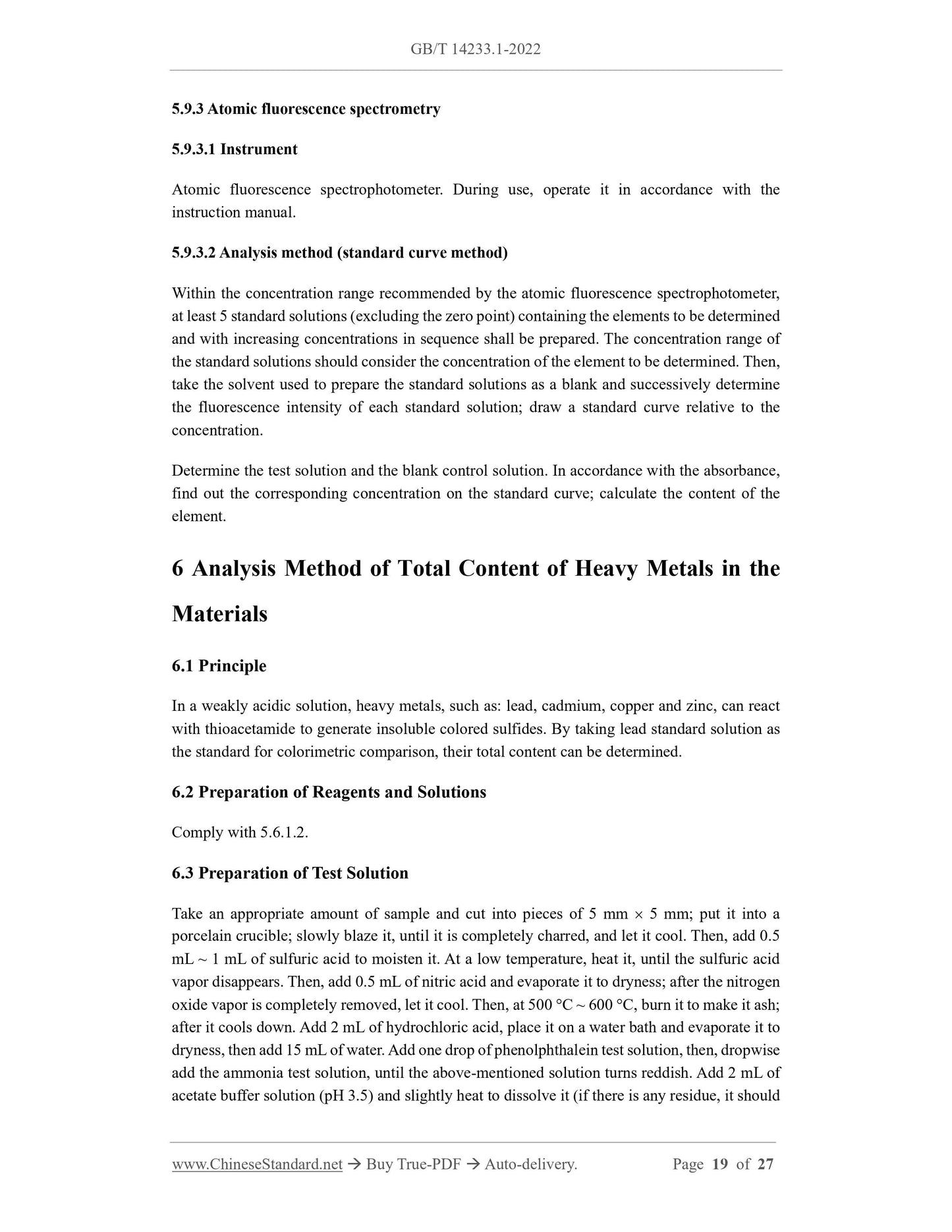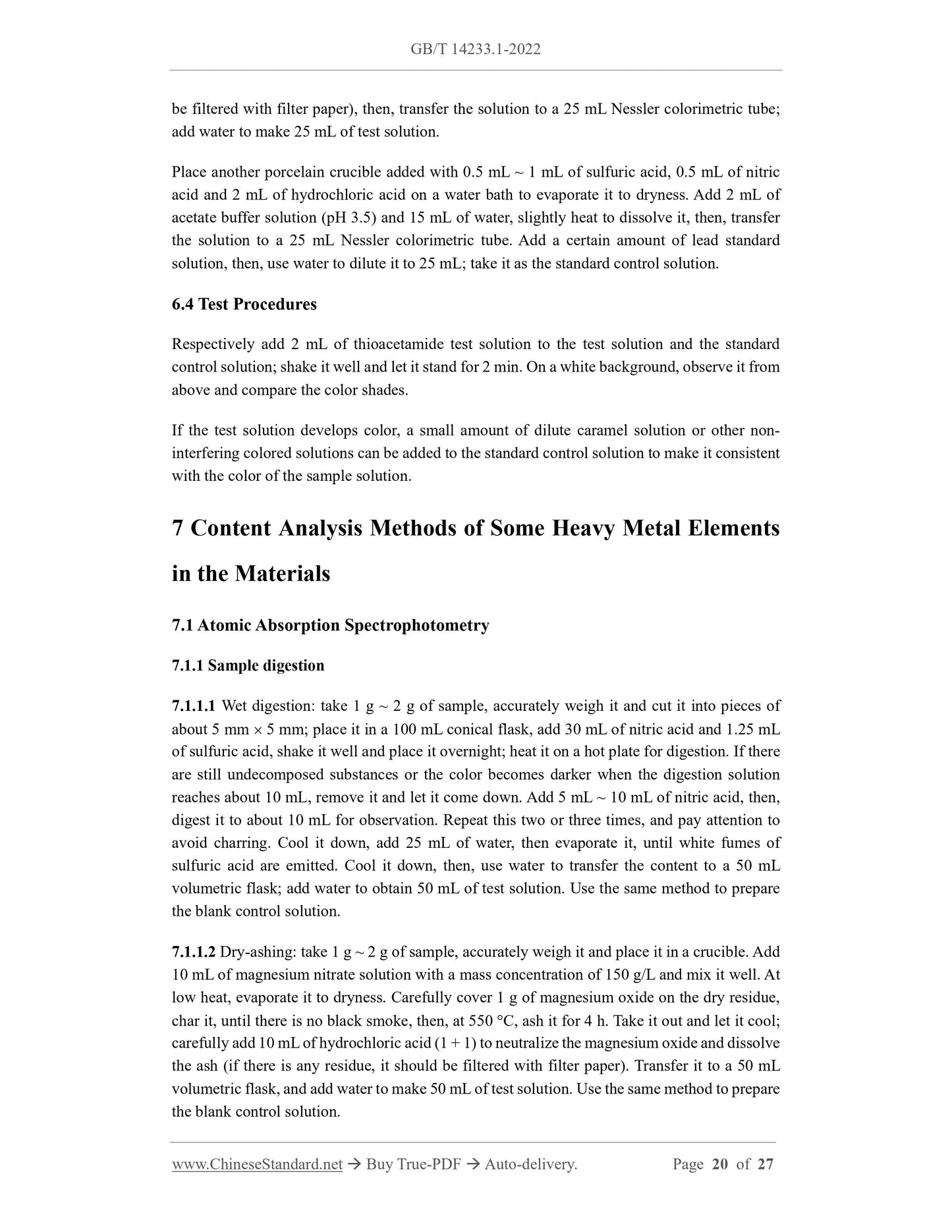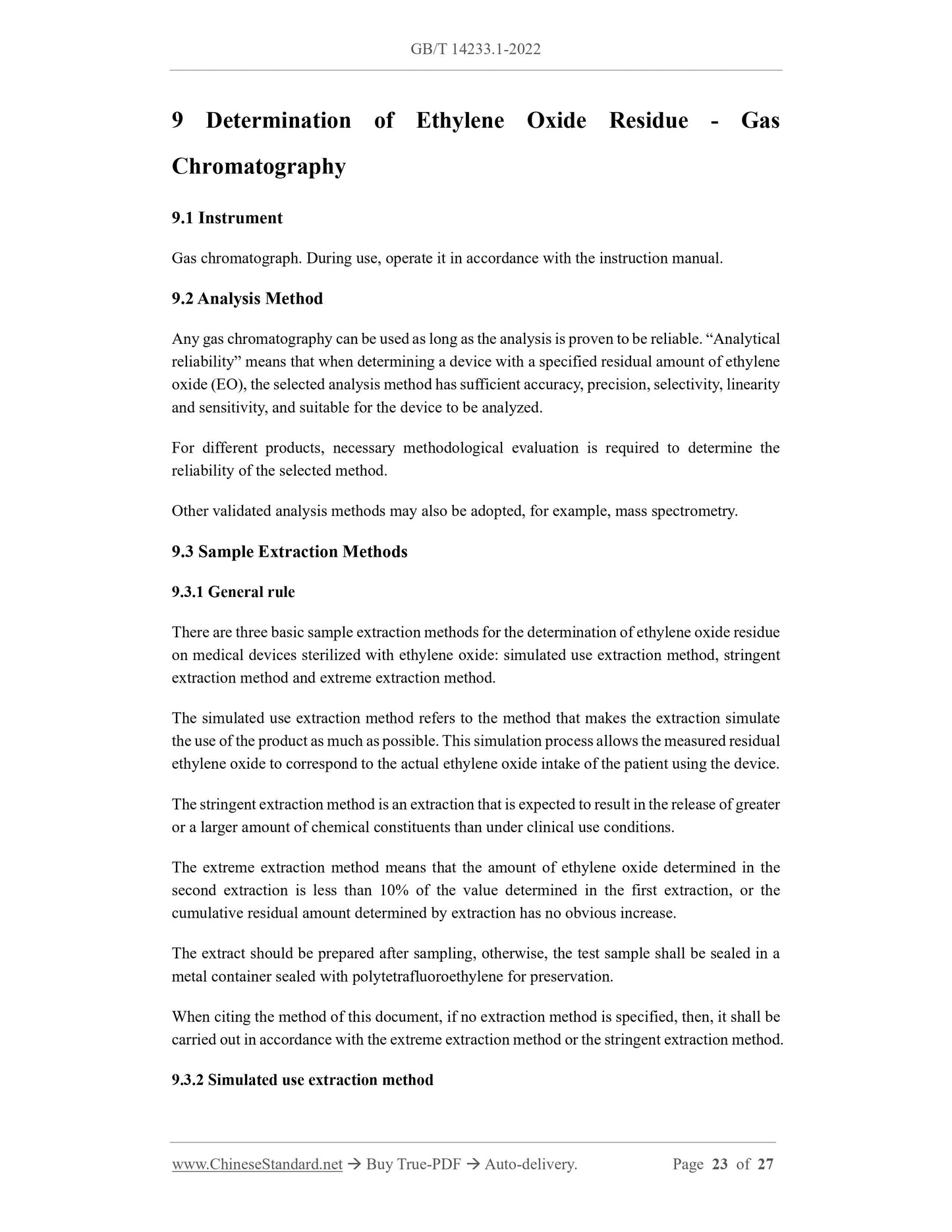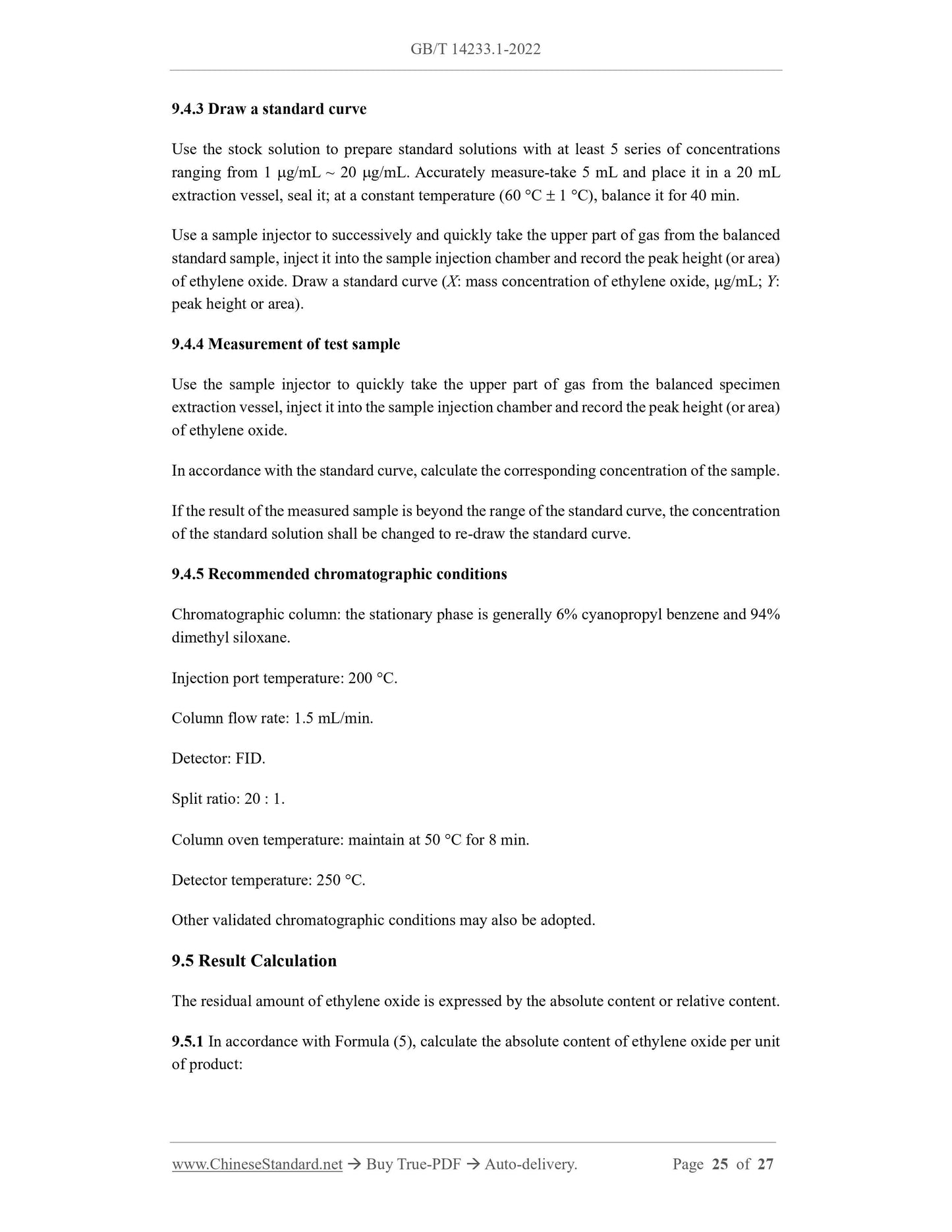1
/
of
12
www.ChineseStandard.us -- Field Test Asia Pte. Ltd.
GB/T 14233.1-2022 English PDF (GB/T14233.1-2022)
GB/T 14233.1-2022 English PDF (GB/T14233.1-2022)
Regular price
$295.00
Regular price
Sale price
$295.00
Unit price
/
per
Shipping calculated at checkout.
Couldn't load pickup availability
GB/T 14233.1-2022: Test methods for infusion, transfusion, injection equipment for medical use - Part 1: Chemical analysis methods
Delivery: 9 seconds. Download (and Email) true-PDF + Invoice.Get Quotation: Click GB/T 14233.1-2022 (Self-service in 1-minute)
Newer / historical versions: GB/T 14233.1-2022
Preview True-PDF
Scope
This document specifies the chemical analysis methods for the infusion, transfusion andinjection equipment for medical use.
This document is applicable to the chemical analysis of the infusion, transfusion, injection and
supporting equipment for medical use and made of medical polymer materials. The chemical
analysis of other medical polymer products can also take this document as a reference.
Basic Data
| Standard ID | GB/T 14233.1-2022 (GB/T14233.1-2022) |
| Description (Translated English) | Test methods for infusion, transfusion, injection equipment for medical use - Part 1: Chemical analysis methods |
| Sector / Industry | National Standard (Recommended) |
| Classification of Chinese Standard | C31 |
| Classification of International Standard | 11.040.20 |
| Word Count Estimation | 18,195 |
| Date of Issue | 2022-10-14 |
| Date of Implementation | 2023-11-01 |
| Older Standard (superseded by this standard) | GB/T 14233.1-2008 |
| Issuing agency(ies) | State Administration for Market Regulation, China National Standardization Administration |
Share
